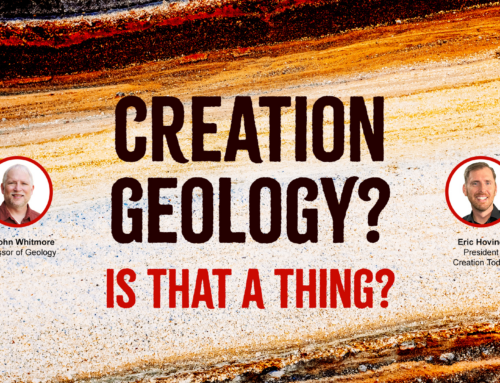Experiments to detect the existence of dark matter particles have proved inconclusive, according to a recent science report. Some of these researchers have now concluded that there is no evidence that the particles, of which they suppose dark matter consists, exist.
The report, on the science news website space.com, was headlined “Search for Dark Matter Particles Turns Up Zilch.”1
What is dark matter?
What is dark matter, and what exactly were the researchers looking for? According to Wikipedia, “its existence and properties are inferred from its gravitational effects on visible matter, radiation, and the large scale structure of the universe.”2 The dark matter hypothesis arises from calculations concerning the Big Bang theory. There is insufficient observed matter to account for the current stability of the universe. If the Big Bang happened as postulated, and the universe contained only observable matter, then it should by now have spread itself into complete dissociation. Therefore, Big Bang astrophysicists propose that there must be much greater gravity caused by matter, which cannot be detected by any current method. This is the dark matter proposed, and Big Bang astrophysicists assume that 84% of all the matter in the universe — and overwhelming majority — is dark matter.3
Einstein’s cosmology was based on a 4-dimensional metric. He noticed that the metric did not fully work, mathematically, because of the gravitational problem suggested above, so he included a constant, which he called the Cosmological Constant, giving it the symbol Λ (the Greek uppercase lambda). He later withdrew this constant, but it has been used again in recent years, in Big Bang Inflationary scenarios.4 It could be said that Λ is essentially a “fiddle-factor” designed to make the metrics work.
Dark matter is imaginary
The creation scientist John Hartnett has done a considerable amount of research into the cosmology of Moshe Carmeli.5 Carmeli’s cosmology, which applies Einsteinian Special Relativity to a cosmic scale, requires a 5-dimensional metric. Hartnett has shown that such a metric does not require the hypothesis of dark matter. The reason for mentioning this is not to claim that Carmeli’s cosmology is the correct one. It is sufficient to note that a secular cosmology, produced by an unbeliever like Carmeli, exists without requiring dark matter, so this suggests that dark matter is merely an imaginary construct, designed to make the math work out for the standard Big Bang Inflationary model of cosmology.
In the Space.com article cited above, the author, Moskowitz, reports that scientists in Italy had developed an underground experiment to detect hypothetical dark matter particles by their effect on liquid xenon. The particles they hoped to find are called Weakly Interacting Massive Particles (WIMPs). The failure to detect any WIMPs over a long period of time does not seem to have convinced the researchers of the non-existence of dark matter, however. Moskowitz reports that “the experimenters concluded that their findings ‘provided no evidence for the existence of Weakly Interacting Massive Particles (WIMPs).’”6 The statement from the researchers states: “Continued measurements with XENON100 and the new experiment XENON1T, currently under construction, should either find evidence for WIMPs or other forms of dark matter would have to be considered.” Surely, another possibility that they should consider is that their cosmology, which has led them to suppose the existence of dark matter, is wrong.
- Moskowitz, C. (2012), Search for Dark Matter Particles Turns Up Zilch, < http://www.space.com/16661-dark-matter-search-reveals-nothing.html >, accessed 11/15/2012 ↩
- Wikipedia article, Dark Matter, < http://en.wikipedia.org/wiki/Dark_matter >, accessed 11/15/2012 ↩
- Hinshaw, G.F. (2010), What Is the Universe Made of?, < http://map.gsfc.nasa.gov/universe/uni_matter.html >, accessed 11/15/2012 ↩
- Hartnett, J., Dark Matter and a Cosmological Constant in a Creationist Cosmology, Journal of Creation (JoC) 19(1) 2005, pp82-87 ↩
- Carmeli, M. (2002), Cosmological Special Relativity, World Scientific, Singapore ↩
- ob cit ↩






